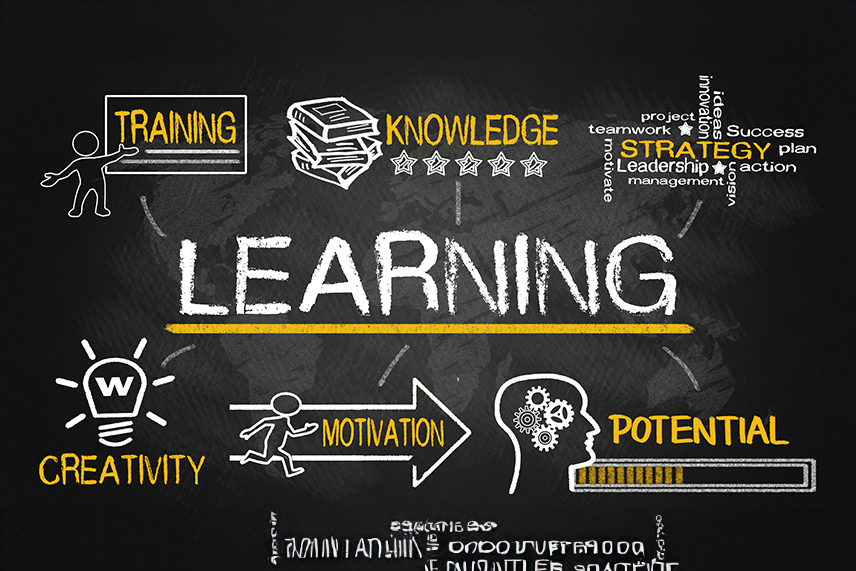
It is that time of the year when L&D leaders start putting together their eLearning budgeting and eLearning strategy requests at the forefront. This intricate planning is not just about crunching numbers but majorly related to orchestrating an in-depth vision of the overall learning initiatives to resonate with the evolving learning needs of the organization.
Nevertheless, to make mission critical decisions related to eLearning budgeting and eLearning Strategy L&D leaders need to strike a fine balance between delivering exceptional learner experiences, managing costs, and above all meeting business objectives. But with the rapid emergence and adoption of AI in the realm of eLearning, 2024 budgeting looks very different than the previous years.
eLearning initiatives are not just a financial roadmap; it's the compass guiding your organization toward a future where learning isn't just a process but a dynamic catalyst for growth.
To provide clarity and help L&D leaders make informed decisions while contemplating eLearning investments and approaches for the new year, Harbinger recently conducted an impactful Power Hour on, “Strategizing and Budgeting eLearning Initiatives for 2024.”
Hosted by Dr. Vikas Joshi, Founder and CEO of Harbinger Group, the interactive roundtable discussion featured two notable panelists:
- Hugh Rumbaugh, Director of Digital Learning, Transparent BPO
- Victoria Feldman, Head of L&D, Amazon
This discussion aimed to shed light on critical aspects, encompassing changes to consider for 2024 L&D budgets and strategies, emerging trends shaping L&D approaches, and the transformative impact of AI on budget composition, spanning tools, systems, and innovative initiatives, providing a holistic perspective for strategic and forward-thinking planning.
Preview of the eLearning Budgeting Landscape in 2023
According to a Finances Online Reviews for Business report, 2023 witnessed a range of impacts in LMS innovation for organizations.
- 72% of organizations gained a competitive edge.
- 40% of Fortune 500 companies used LMS to stay highly competitive.
- 9% of businesses saw improved organizational growth, transformation, and productivity.
While these statistics offer crucial insights from a business perspective, a comprehensive eLearning plan necessitates a holistic understanding from the learner’s viewpoint. Shifting the lens to the learner, the same report reveals:
- 68% prefer to learn at work.
- 58% want to learn at their convenience and pace.
- 49% prefer to learn at their own point of need.
As per the 2023 Workplace Learning Report, the top focus areas of L&D for the year were:
#1: Aligning learning programs to business goals
#2: Upskilling employees
#3: Creating a culture of learning
#4: Improving employee retention
These figures highlight a distinctive perspective, emphasizing the importance of adopting a comprehensive view. This underscores the imperative for a nuanced eLearning strategy that addresses the evolving needs of both organizations and learners in the dynamic landscape. This is where insights from experts can play an instrumental role in helping L&D leaders focus on building an effective eLearning budgeting plan and a robust eLearning strategy for 2024.
Marking Change in the eLearning Spending Trend
It is imperative for organizations to reassess their eLearning spending patterns. In the current landscape, the focus is shifting from traditional global spending to a more targeted investment in skills development within the L&D domain. Notably, both offshore and onshore L&D companies are actively realigning their budgets, unlocking new opportunities for innovation and growth.
As technology continues its swift evolution, businesses are compelled to adapt and embrace these changes in the eLearning realm. This shift in spending dynamics emphasizes the need for a forward-thinking approach, ensuring that organizations strategically allocate resources to stay at the competitive edge of the skills economy. In this transformative year, unlocking budgetary constraints opens avenues for tailored investments that align with the dynamic demands of a rapidly evolving learning landscape.
Drivers of L&D Strategy in 2024

As businesses embark on shaping the eLearning budgeting and eLearning strategy for 2024, it is vital to closely monitor the trajectory of the business, pinpoint areas requiring attention, and assess the influx of new talent across various roles. In response to evolving needs, it is essential to prioritize the overarching objective of facilitating employee learning—whether acquiring new skills or enhancing existing ones—all while ensuring their job satisfaction remains a central focus.
The emergence and swift integration of generative AI in crafting and scaling learning programs for a wide audience stand as a formidable force that demands attention. This technology plays a pivotal role in efficiently reaching and engaging a large number of individuals.
Moreover, as the emphasis shifts from merely gauging business outcomes to a more nuanced focus on behaviors, L&D leaders must meticulously observe and measure the success of learning initiatives. It becomes imperative to closely monitor how completing a course influences the overall behavior of an employee, ensuring a more comprehensive evaluation of the impact of the learning experience.
Elements Driving CLOs to Relook eLearning Budgeting
When Chief Learning Officers delve into L&D budgets, their responses vary, especially in growth industries where increased spending is anticipated. Growth industries are aware that they have to hire or retain top talent. ROI plays a vital role and is a number one decision driver from a CLOs perspective making impact more important for an organization.
Impact in this context can mean different things, like handling change, improving security and compliance, upskilling employees, and addressing talent retention. Also, assessing technological needs is key to figuring out if costs can be managed better.
For an eLearning budget and strategy, other factors come into play, such as improving the employee experience, encouraging continuous learning, relying on data for decisions, ensuring compliance, diversity training, and considering global and local needs. All these elements work together to create a well-thought-out and effective eLearning budgeting plan and strategy.
Impact of Changing Learning Patterns

Today in general we see that content is consumed in different ways. With Generation Z coming into the workforce, we observe they consume a good amount of knowledge through social media and short videos. In fact, the workforce that does not fall under GenZ also face issues like attention span making nudge learning and bite-sized content increasingly popular among the workforce.
These strategies not only cater to the evolving needs of the modern workforce but also align with the dynamic landscape of learning preferences, ensuring a more impactful and tailored learning experience for all.
Harbinger successfully flattened the forgetting curve for a leading corporate training solutions company by creating training nuggets into SprinkleZone, a flagship nudge learning platform developed by Harbinger and improved learning outcomes.
Final Take
Organizational success is largely dependent on building a resilient learning future. Allocation of funds towards an eLearning budgeting plan can be extremely tricky as CLOs need to wrap their head around a never-ending list of drivers and make wise decisions based on the overall business objective, learner needs, and most of all employee experience.
In the absence of a strategic framework, investing in Learning and Development risks being haphazard and less effective. Crafting a thoughtful and purposeful eLearning strategy is the cornerstone for impactful investments that not only align with organizational goals but also ensure a meaningful and engaging learning experience for employees.
If you are looking for dedicated assistance to build an effective eLearning budgeting strategy for your organization in 2024, get in touch with our eLearning and technology experts at contact@harbingergroup.com. We would be more than happy to help you achieve your desired business goals.





